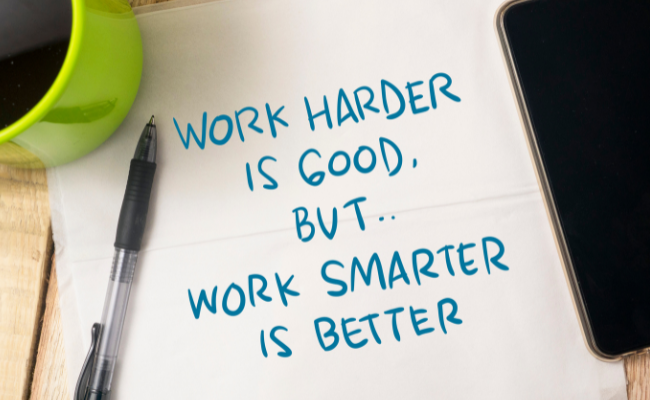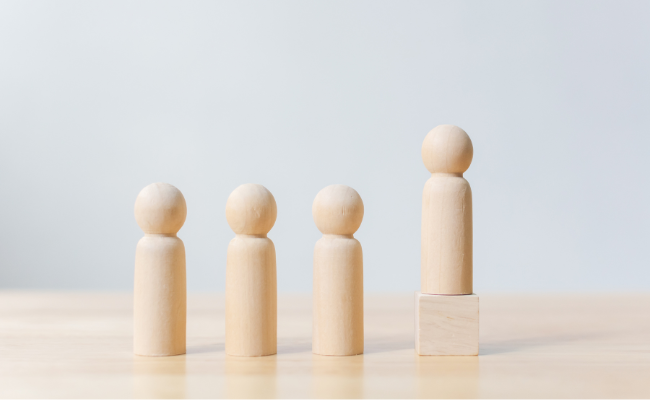Work Smarter, Not Harder: Jenny Lynne Interviews Ana Melikian
“Learning to tap into human potential by working smarter and not harder allowed me to achieve my goals without waking up tired every day. I could enjoy life and my family—travel and exercise more.” – Ana Melikian
I had the delight of being interviewed by Jenny Lynne Erickson, an entrepreneur, business advisor, writer, and the host of the Death of a Workaholic podcast.
We discuss:
- How having dyslexia led me to develop a work ethic I’m proud of
- How I learned to work smarter and not harder
- Looking at human potential from a different perspective
How having dyslexia led me to develop a work ethic I’m proud of

Dyslexia is more than trouble with letters and spelling—it impacts multiple facets of focus, processing, and comprehension. Growing up with dyslexia, I had to work extra hard to grasp grammar and spelling using different methods than my classmates.
This practice shaped my work ethic into one I view as a badge of honor, despite the forest I had to trek through. It gave me the ability to persist in all pursuits with resilience. Dedication. Determination.
Even while earning my Ph.D. and Master's Degree and studying outside of my comfort zone, I called on that persistence to see me through. From learning new languages to traveling to new places, I persisted to every advantage in my career and education. Scholarships on top of scholarships, a constant track of go go go.
But being the energizer bunny all of the time takes a toll.
After being diagnosed with inflammatory breast cancer, I kept working through my cancer treatments to maintain normalcy. But all my persistence and reserves were funneled into pushing through treatments—there was none left for driving myself in work.
I had to change how I approached work and find new ways to excel. In other words: How to work smarter, not harder.
How I learned to work smarter and not harder

Before my diagnosis, I was not very skilled at prioritizing. I was a yes-woman who went full-in on any project I was a part of, quick to sacrifice sleep and my health to fit more responsibilities into my day.
I had to learn how to say no. To prioritize.
The magic of no is that it’s a complete sentence. Though society has villainized “no,” it is actually one of the most important boundaries we can set. And, if the person on the receiving end of the no is a true ally or friend, they will meet you with only understanding and grace.
“No” is a chance for us to strengthen boundaries and invest in healthy relationships with work, colleagues, and even family and friends.
With these boundaries in place, I delegated, sized down my involvement in choice projects, and honed in on the ones I was really invested in. I was still able to contribute in an impactful way, even if it looked different than before.
After I reached the other side of my treatments and recovered, it was tempting to slip into old habits, to delete that portion of my life—but that did not support the future I wanted to build for myself and my family.
The truth of the matter was, forcing myself to prioritize and scale down my responsibilities uncovered a more clever and strategic way of operating, and it would have been a disservice to myself to leave that behind.
It’s easy for somebody that likes to work—who gains loads of self-esteem and value from working and being busy—to get busy with the wrong things, or be busy for the sake of being busy and not producing or investing the time into projects that are going to change things in the long term.
Looking at human potential from a different perspective

Determining priorities is a process, not a light-bulb moment. We don’t suddenly perceive our full potential at the drop of a hat—it takes study, investment, trial and error. Blood, sweat, and tears, as the saying goes.
It also takes pausing. Intentional pauses that leave room for a thoughtful response to whatever life throws at us.
There are three types of pauses:
- Macro-pauses—such as my cancer diagnosis, a retreat, reading a book, etc.
- Scheduled pauses—setting time aside to think on an issue, journal, etc.
- A micro-pause—when we feel a trigger to respond a certain way and take time to consider a different response
One of the best ways to integrate micro-pauses into our lives is to take deep breaths. That may not always be easy when under stress or pressure. What I’ve found that helps is to first “empty the cup” by breathing out until we engage our stomach muscles and then draw in a slow, deep breath that reaches far past the top of our lungs.
Doing this once will help bring us out of stress mode and into a more relaxed state of mind.
If we learn to tap into the human potential in the high-performance realm by working smarter, not harder, and working more strategically, we could still achieve our goals, but without waking up tired every day. We can enjoy life more.
When was the last time you took a pause? How do you avoid overextending yourself by using the power of no?
Be sure to check out my whole interview with Jenny for further insight on working smarter, not harder!








